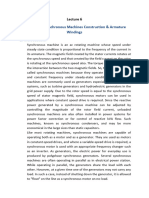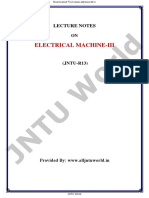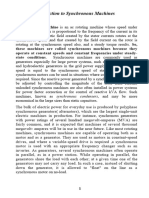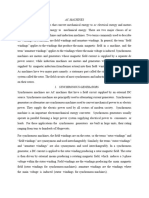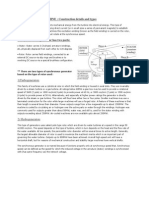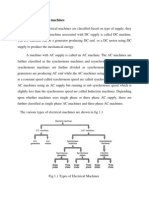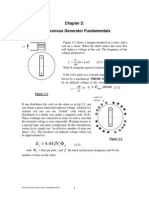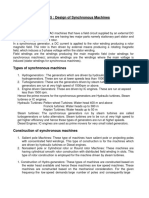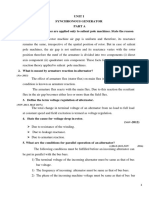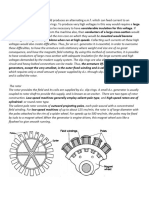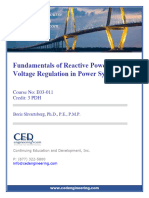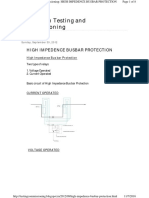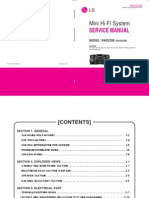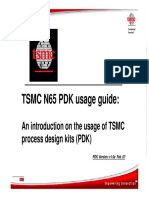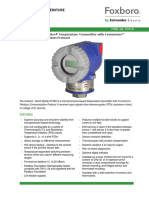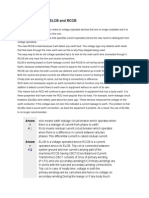0% found this document useful (0 votes)
78 views6 pagesSynchronous Alternators
Synchronous alternators are crucial as AC generators, supplying electrical power across various sectors and operating in parallel within large power systems. They consist of a stator and rotor, with classifications based on armature and field winding arrangements, as well as the type of prime movers used, such as hydro, turbo, and engine-driven generators. The document also discusses the construction, operation, and performance characteristics of synchronous machines, including concepts like pitch factor, distribution factor, and armature reaction.
Uploaded by
Md Azlan EjazCopyright
© © All Rights Reserved
We take content rights seriously. If you suspect this is your content, claim it here.
Available Formats
Download as PDF, TXT or read online on Scribd
0% found this document useful (0 votes)
78 views6 pagesSynchronous Alternators
Synchronous alternators are crucial as AC generators, supplying electrical power across various sectors and operating in parallel within large power systems. They consist of a stator and rotor, with classifications based on armature and field winding arrangements, as well as the type of prime movers used, such as hydro, turbo, and engine-driven generators. The document also discusses the construction, operation, and performance characteristics of synchronous machines, including concepts like pitch factor, distribution factor, and armature reaction.
Uploaded by
Md Azlan EjazCopyright
© © All Rights Reserved
We take content rights seriously. If you suspect this is your content, claim it here.
Available Formats
Download as PDF, TXT or read online on Scribd
/ 6

